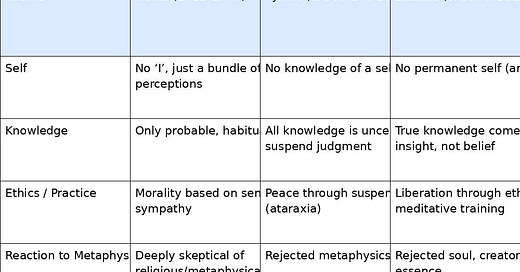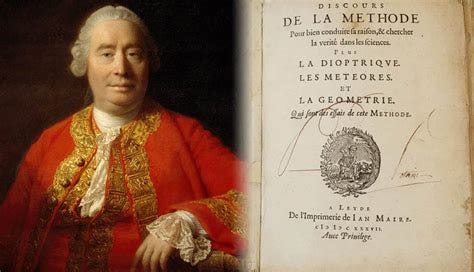TheGentleLaw Community
What if I told you that a Scottish philosopher from the 18th century, a wandering Greek sage from the 4th century BCE, and an Indian renunciant sitting under a fig tree in ancient Bihar were all pointing to the same astonishing insight?
That you, the person reading this, might not even exist the way you think?
Welcome to the invisible triangle of Hume, Pyrrho, and the Buddha.
David Hume (1711–1776) was a Scottish philosopher, historian, economist, and essayist — widely regarded as one of the most important figures of the Enlightenment. Born in Edinburgh into a modest noble family, he showed early signs of genius but struggled to find a traditional academic post due to his radical ideas and skepticism about religion.
Instead, he carved a life as a private scholar, publishing groundbreaking works like A Treatise of Human Nature, An Enquiry Concerning Human Understanding, and Dialogues Concerning Natural Religion. His philosophical project was bold: to build a “science of human nature” based entirely on experience and observation.
Hume was deeply skeptical of metaphysics, miracles, and the concept of a permanent self and these views would later shape thinkers from Kant to Darwin to modern cognitive science. Despite his doubts, he was known in person for his charm, generosity, and good humor.
When asked on his deathbed whether he feared the afterlife, Hume replied with his signature calm: “It is a most unreasonable fancy that we should exist forever.”
Hume: The Self as a Bundle of Perceptions
David Hume, one of the key figures of the Enlightenment, is often labeled as an empiricist. And rightly so: for Hume, all knowledge begins with experience. But what’s less widely appreciated is the radical depth of his empiricism.
In his Treatise of Human Nature, Hume famously writes:
"When I enter most intimately into what I call myself, I always stumble on some particular perception... I never can catch myself at any time without a perception, and never can observe anything but the perception."
No core self. No metaphysical soul. Just fleeting impressions, emotions, and sensations, like images on a movie reel with no projector behind them.
It’s a vision that unravels our daily assumptions about who we are. And Hume was aware of its unsettling implications: he speaks of feeling "loosened from all moorings" and needing to play backgammon just to escape the philosophical vertigo.
But Hume wasn’t alone on this strange path.
The Buddha: No Self, No Problem?
Almost 2,300 years earlier, the Buddha taught a strikingly similar idea: the doctrine of anattā, or “not-self.” In early Buddhist texts, the Buddha declares that what we call “self” is merely a bundle of five aggregates (khandha): form, feeling, perception, mental formations, and consciousness.
None of them are permanent. None of them are you.
“This is not mine, this I am not, this is not my self.” ( Anattalakkhaṇa Sutta)
In both Hume and the Buddha, we find no stable, enduring ‘I’ behind our experiences; just a stream. A flame without a fixed wick.
The key difference? While Hume lets the realization pull him toward existential unease, the Buddha offers a path of liberation through meditation, ethics, and insight. Where Hume plays backgammon, the Buddha crosses over to the "far shore."
Keep reading with a 7-day free trial
Subscribe to The Gentle Law to keep reading this post and get 7 days of free access to the full post archives.





